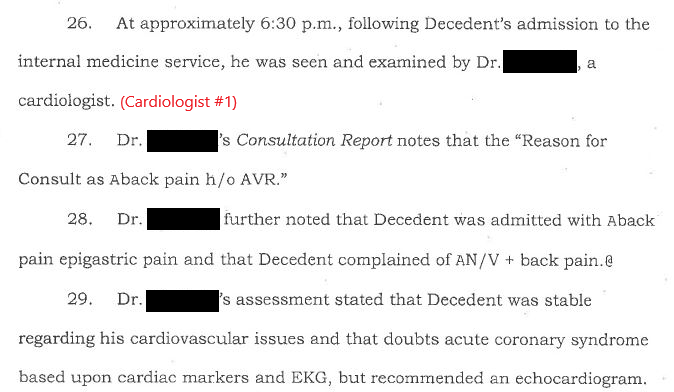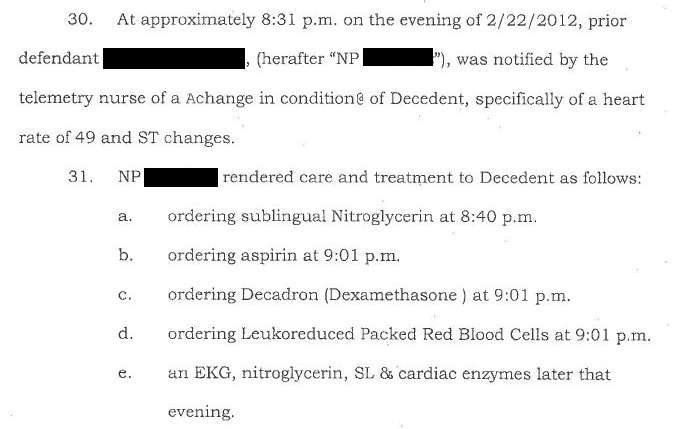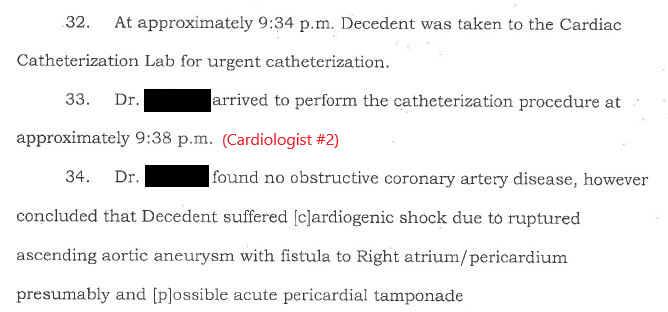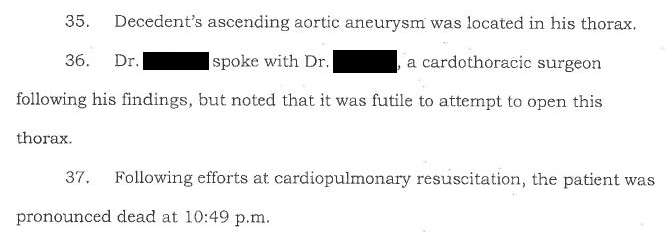The patient was taken from the ED to his hospital room. What happens next is best described through the legal documents that would later be filed.
It was early evening when the patient arrived to the floor, and the on-call cardiologist was still in the building. He was therefore able to see the patient promptly. After his own H&P, he did not suspect that his symptoms were cardiac in nature. Nonetheless, he recommended an echocardiogram in addition to the serial cardiac enzymes ordered by the hospitalist.
Two cardiologist would ultimately be involved in this patient’s care. The legal document have been annotated to help the reader keep track of which one is being referenced. The cardiologist who was consulted on the patient is referred to as Cardiologist #1.

The hospitalist reviewed the consult note. Her shift was coming to an end around this time. This hospital used NPs and PAs to cover some areas of the hospital at night. The NP covering the floor that night was brand new. In fact, it was her very first shift.
During sign-out, the hospitalist and NP received a call from a floor nurse stating that the patient was feeling unwell, his heart rate had slowed to the 40s, and there were ST changes present. Both the hospitalist and the NP went to the patient’s bedside.

Due to the ST changes, the interventional cardiologist was paged. This is a second cardiologist, not the same one who initially consulted on the patient about 2 hours earlier. He is referred to as Cardiologist #2. The patient was taken urgently to the cath lab.

After discovery of the ruptured ascending aortic aneurysm and possible tamponade, a cardiothoracic surgeon was emergently consulted. Unfortunately, the patient rapidly went into cardiac arrest.

The patient’s wife was notified of his tragic and unexpected death.
Continue to the next page to see the details from the legal proceedings.